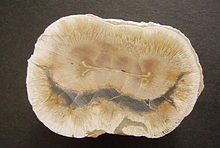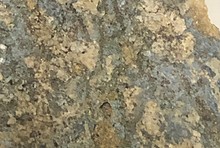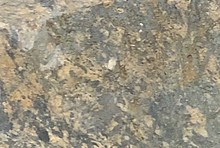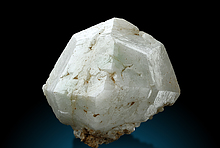Home PageAbout MindatThe Mindat ManualHistory of MindatCopyright StatusWho We AreContact UsAdvertise on Mindat
Donate to MindatCorporate SponsorshipSponsor a PageSponsored PagesMindat AdvertisersAdvertise on Mindat
Learning CenterWhat is a mineral?The most common minerals on earthInformation for EducatorsMindat ArticlesThe ElementsThe Rock H. Currier Digital LibraryGeologic Time
Minerals by PropertiesMinerals by ChemistryAdvanced Locality SearchRandom MineralRandom LocalitySearch by minIDLocalities Near MeSearch ArticlesSearch GlossaryMore Search Options
The Mindat ManualAdd a New PhotoRate PhotosLocality Edit ReportCoordinate Completion ReportAdd Glossary Item
Mining CompaniesStatisticsUsersMineral MuseumsClubs & OrganizationsMineral Shows & EventsThe Mindat DirectoryDevice SettingsThe Mineral Quiz
Photo SearchPhoto GalleriesSearch by ColorNew Photos TodayNew Photos YesterdayMembers' Photo GalleriesPast Photo of the Day GalleryPhotography
╳Discussions
💬 Home🔎 Search📅 LatestGroups
EducationOpen discussion area.Fakes & FraudsOpen discussion area.Field CollectingOpen discussion area.FossilsOpen discussion area.Gems and GemologyOpen discussion area.GeneralOpen discussion area.How to ContributeOpen discussion area.Identity HelpOpen discussion area.Improving Mindat.orgOpen discussion area.LocalitiesOpen discussion area.Lost and Stolen SpecimensOpen discussion area.MarketplaceOpen discussion area.MeteoritesOpen discussion area.Mindat ProductsOpen discussion area.Mineral ExchangesOpen discussion area.Mineral PhotographyOpen discussion area.Mineral ShowsOpen discussion area.Mineralogical ClassificationOpen discussion area.Mineralogy CourseOpen discussion area.MineralsOpen discussion area.Minerals and MuseumsOpen discussion area.PhotosOpen discussion area.Techniques for CollectorsOpen discussion area.The Rock H. Currier Digital LibraryOpen discussion area.UV MineralsOpen discussion area.Recent Images in Discussions
Mineralogical ClassificationHydrothermal alteration of chevkinite-group minerals
27th Nov 2015 12:47 UTCMarco E. Ciriotti Manager
▪ Bagiński, B., Macdonald, R., Dzierżanowski, P., Zozulya, D., Kartashov, P.M. (2015): Hydrothermal alteration of chevkinite-group minerals: products and mechanisms. Part 1. Hydration of chevkinite-(Ce). Mineralogical Magazine, 79, 1019-1037.
▪ Macdonald, R., Bagiński, B., Kartashov, P.M., Zozulya, D., Dzierżanowski, P. (2015): Hydrothermal alteration of chevkinite-group minerals. Part 2. Metasomatite from the Keivy massif, Kola Peninsula, Russia. Mineralogical Magazine, 79, 1038-1059.
Abstracts:
(1) Samples from Russia and Scotland are used to examine the interaction of the REE-Ti silicate chevkinite-(Ce) with hydrothermal fluids. Altered zones in crystals are distinguished by using areas of low intensity on backscattered-electron images, low analytical totals, increasingly large departures from stoichiometry and, in some cases, the presence of micropores. Initial alteration of the chevkinite results in strong Ca enrichment. With increasing degrees of alteration, Ca abundances drop sharply, as do those of the REE, Fe and Si. In contrast, Ti levels increase strongly, usually accompanied by higher Nb ± Th levels. The most altered zones contain up to 36 wt.% TiO2 and the formula cannot be expressed in the standard chevkinite formula. In detail, samples follow different alteration trends, presumably reflecting different P, T, f O2 and fluid composition. The Ti enrichment may have been related to a reaction front of dissolution-reprecipitation passing through the outer zones of the original chevkinite, leaving behind a reprecipitated Ti-enriched phase which may or may not be chevkinite.
(2) Chevkinite-(Ce) in a mineralized quartz-epidote metasomatite from the Keivy massif, Kola Peninsula, Russia, underwent at least two stages of low-temperature alteration. In the first, it interacted with hydrothermal fluids, with loss of Ca, Fe, LREE and Si and strong enrichment in Ti. The altered chevkinite was then rimmed and partially replaced by a zone of ferriallanite-(Ce) and davidite-(La), in turn rimmed by a zone of allanite-(Ce) richer in the epidote component. The allanite zone was in turn partially replaced by rutile-titanite-quartz assemblages, the formation of titanite postdating that of rutile. Aeschynite-(Y), aeschynite-(Ce) and REE-carbonates are accessory phases in all zones. The hydrothermal fluids were alkaline, with significant proportions of CO2 and F. At various alteration stages, the Ca, Si ± Al activities in the fluid were high. Formation of the aeschynite is discussed in relation to its stability in broadly similar parageneses; it was a primary phase in the unaltered chevkinite zone whereas in other zones it formed from Nb, Ti, REE and Th released from the major phases.
27th Nov 2015 17:40 UTCUwe Kolitsch Manager
Ray Macdonald, Bogusław Bagiński, Pavel M. Kartashov, Dmitry Zozulya, Piotr Dzierżanowski & Petras Jokubauskas (2015): Hydrothermal alteration of a chevkinite-group mineral to a bastnäsite-(Ce)-ilmenite- columbite-(Fe) assemblage: interaction with a F-, CO2-rich fluid. Mineralogy and Petrology, 109, 659-678.
The results are presented of a textural and mineral chemical study of a previously undescribed type of hydrothermal alteration of chevkinite-(Ce) which occurs in a syenitic pegmatite from the Vishnevye Mountains, Urals Region, Russia. The progressive alteration of the chevkinite to a bastnäsite-(Ce)-ilmenite-columbite-(Fe) assemblage through a series of texturally complex intermediate stages is described and electron microprobe analyses are given of all the major phases. Unusual Nb ± Th-rich phases formed late in the alteration sequence provide evidence of local Nb mobility. The main compositional fluxes are traced, especially of the REE, HFSE, Th and U. It appears that almost all elements, with the exception of La, released from the chevkinite-(Ce) were reincorporated into later phases, such that they did not leave the alteration crust in significant amounts. The hydrothermal fluids are inferred to have been F- and CO2-rich, with variable levels of Ca activity, and with fO2 mainly between the nickel-nickel oxide and magnetite-hematite buffers. This occurrence represents a new paragenesis for a columbite-group mineral.
27th Nov 2015 20:59 UTCPavel Kartashov Manager




Mindat.org is an outreach project of the Hudson Institute of Mineralogy, a 501(c)(3) not-for-profit organization.
Copyright © mindat.org and the Hudson Institute of Mineralogy 1993-2024, except where stated. Most political location boundaries are © OpenStreetMap contributors. Mindat.org relies on the contributions of thousands of members and supporters. Founded in 2000 by Jolyon Ralph.
Privacy Policy - Terms & Conditions - Contact Us / DMCA issues - Report a bug/vulnerability Current server date and time: April 23, 2024 18:02:05
Copyright © mindat.org and the Hudson Institute of Mineralogy 1993-2024, except where stated. Most political location boundaries are © OpenStreetMap contributors. Mindat.org relies on the contributions of thousands of members and supporters. Founded in 2000 by Jolyon Ralph.
Privacy Policy - Terms & Conditions - Contact Us / DMCA issues - Report a bug/vulnerability Current server date and time: April 23, 2024 18:02:05











